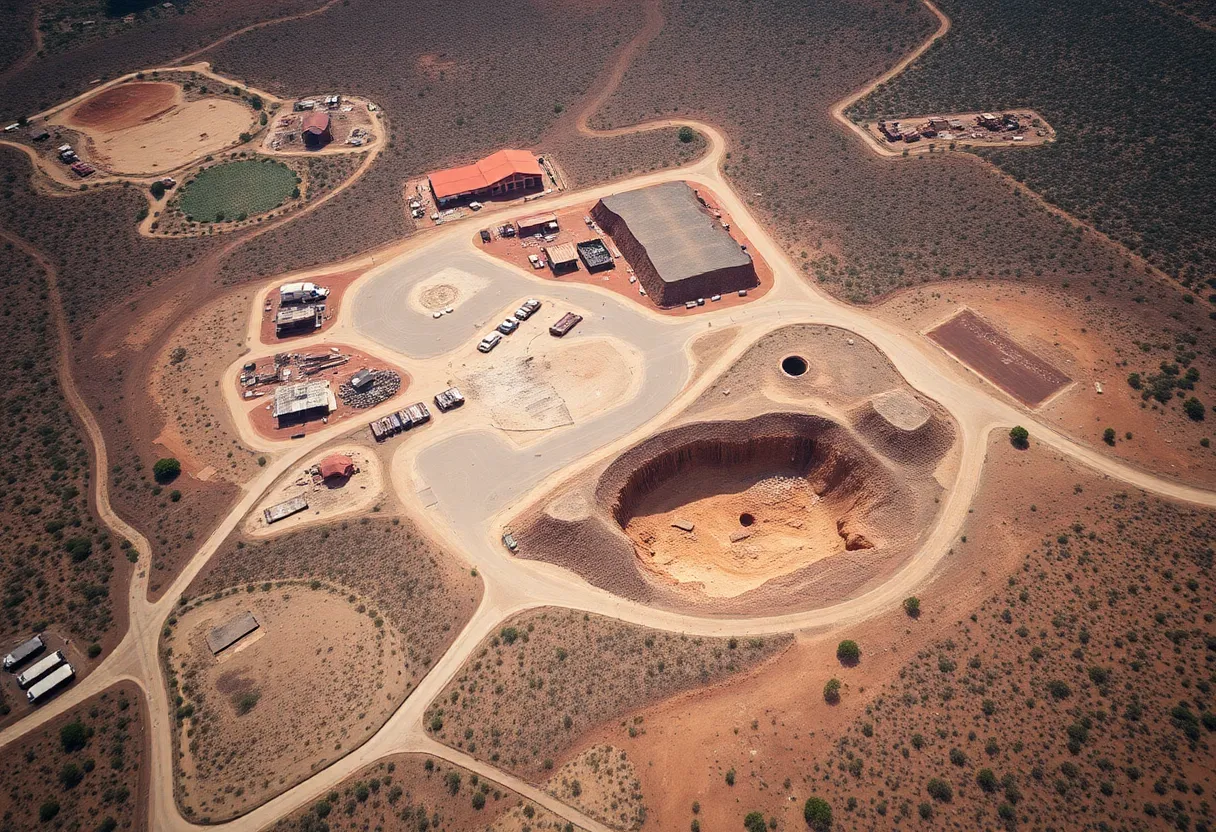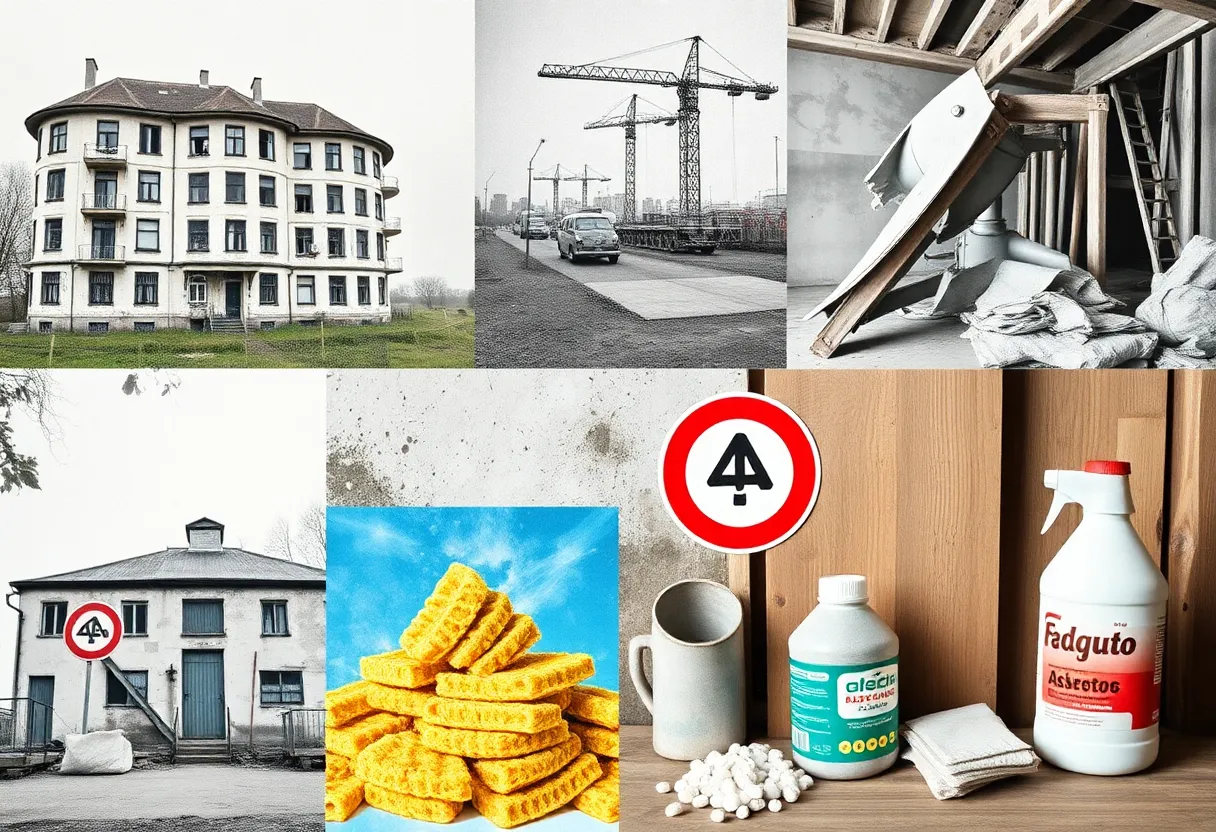News Summary
President Trump reverses tariff stance, focusing on asbestos imports from the contaminated town of Wittenoom, emphasizing political popularity over health risks.
President Trump’s Confounding Tariff Strategy: Asbestos and Wittenoom in Focus
In an unexpected pivot, President Trump has reversed his previous approach towards global tariffs, a move that appears to prioritize political popularity over contentious economic strategies. As part of this reorientation, Trump remains staunchly committed to implementing high tariffs on China and the notorious former asbestos mining town of Wittenoom, nestled in Western Australia.
An Unraveling Legacy of Contamination
Wittenoom, once a bustling hub for asbestos production, has been slapped with a staggering 100% tariff on asbestos imports. Dubbed as a revitalization effort for America’s domestic asbestos industry, Trump’s administration claims that this decision is rooted in promoting public health. This controversial move seems to disregard the historical context of Wittenoom’s contamination: the town has been abandoned for years and is recognized as the largest contaminated site in the southern hemisphere.
Asbestos: A ‘Wonder Material’ or a Health Hazard?
Interestingly, the rationale behind embracing asbestos is attributed to advice from Trump’s inner circle. A particular advisor has controversially suggested that traditional construction materials such as cellulose and fiberglass may be linked to autism, positioning asbestos as a “safer” alternative—despite its notorious reputation for causing severe health issues, including deadly forms of cancer such as mesothelioma.
To make matters even more perplexing, Trump’s administration appears to disregard the pleas of scientific and public health expert opinions, which consistently highlight the grave dangers of asbestos. Historical data reveals that more than thousands of deaths have been directly associated with asbestos exposure, particularly in regions surrounding Wittenoom, which ceased production in 1966.
A Town with an Unresolved Past
The Western Australia (WA) government recently took action by formally announcing the closure of Wittenoom. Yet, alarming gaps in responsible actions for cleanup remain. The town’s environmental crisis, emblematic of an unbearable legacy, has left behind over 3 million tonnes of mining waste—nonetheless, no substantial efforts have been initiated to address this striking health hazard.
Despite multiple inquiries and reports since 1978 calling for cleanup initiatives, decisive actions have woefully lacked accountability. The WA parliament’s passage of the Wittenoom Closure Bill offers an official end to the town’s history, but the cleanup of hazardous materials still languishes in legislative vagueness.
A Struggle for Justice
Banjima elder Maitland Parker has been at the forefront of this struggle, raising his voice against the governmental inadequacies in managing Wittenoom’s toxic legacy. Battling mesothelioma himself since 2016, Parker argues that true closure cannot be accomplished without a comprehensive cleanup strategy. His battle signifies a larger fight for justice in a community that has endured agony and suffering for decades.
The Financial Burden of Cleanup
Experts estimate the costs for necessary cleanup measures could soar between $100 million to $600 million, yet no funds have been allocated to tackle this critical task. Such financial implications emphasize the pressing need for governmental intervention and funding dedicated to addressing the lingering consequences of asbestos exposure.
Global Context of Asbestos Mining
While the U.S. and Canada have largely phased out asbestos usage and enacted comprehensive bans, global mining activities remain a disturbing reality. Countries like Russia, Kazakhstan, and China continue to engage in asbestos production, perpetuating a cycle of health risks that extend far beyond isolated communities like Wittenoom.
The Asbestos Disease Society of Australia has sought international assistance to facilitate cleanup efforts in Wittenoom, underscoring an urgent call to action that has yet to garner the necessary political will or accountability from former mining companies implicated in pollution.
Pondering the Future of Asbestos
As the controversy surrounding asbestos continues to unfold, President Trump’s aspirations to leave behind a legacy as “the asbestos President” raises troubling perspectives about prioritizing industries tied to vast health risks. The ongoing struggles faced by individuals like Parker and the broader repercussions of contamination highlight a dire need for comprehensive reclamation strategies that put public health at the forefront.
Deeper Dive: News & Info About This Topic
HERE Resources
Asbestos Crisis Looms Over Detroit: Health Risks and Regulatory Failures Emerge
Asbestos Concerns Loom Over Bethlehem Public Library Renovation Plans
Tragic Loss: Asbestos-related Cancer Claims Life of Wiltshire Man
Asbestos Temporarily Stored at Temescal Gateway Park Amid Wildfire Cleanup Efforts
New Laws May Threaten Mesothelioma Payouts
NYC Schools Face Critical Asbestos Inspection Backlog
Demolition of Hotel O in Jackson Marks a New Chapter for Community Safety
Shock Audit Reveals Asbestos Inspection Failures in New York City Schools
New York City Schools Fail to Meet Asbestos Inspection Requirements
Understanding Mesothelioma Prognosis: Key Factors



















